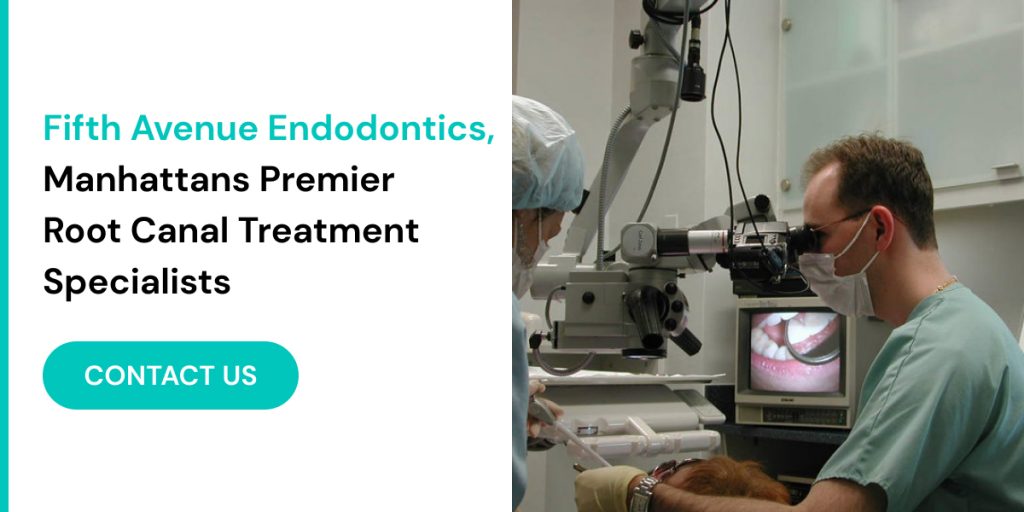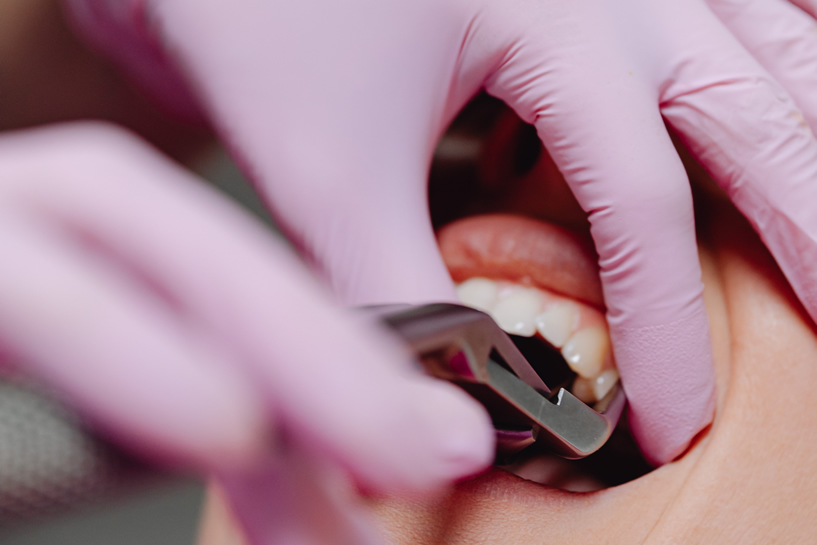Dental hypersensitivity, also known as dentin hypersensitivity, is a widespread and often painful condition affecting a significant portion of the population. Characterized by sharp pain when consuming hot, cold, sweet, or acidic foods and beverages, this condition can be debilitating and greatly impact one’s quality of life. The pain results from the exposure of the dentin, a porous layer of the tooth, which leads to the stimulation of nerves within the tooth.
While general dentistry can address some aspects of dental hypersensitivity, endodontists play a crucial role in providing more specialized and effective treatment options. Unlike general dentists, endodontists focus on the diagnosis and treatment of diseases and injuries of the dental pulp and surrounding tissues. Their expertise allows them to tackle the root causes of dental hypersensitivity, providing patients with targeted and long-lasting relief.
For those who have been searching for an endodontist near me NYC, understanding the advanced care offered by endodontists can be a game-changer. These specialists use state-of-the-art techniques and treatments, such as root canal therapy and surgical interventions, to manage and treat dental hypersensitivity effectively. By addressing the underlying issues, endodontists can help patients regain their comfort and improve their overall oral health.
Understanding Dental Hypersensitivity
Dental hypersensitivity, also known as dentin hypersensitivity, is a condition characterized by sharp, sudden pain in response to specific stimuli. This pain occurs when the dentin, the layer beneath the enamel of the tooth, becomes exposed. Dentin exposure can result from several factors, including enamel erosion, gum recession, tooth decay, or even aggressive brushing habits. The enamel, which serves as the tooth’s protective outer layer, can wear away over time due to acidic foods and beverages, leading to the exposure of the underlying dentin.
The dentin itself is composed of microscopic tubules that directly connect to the nerve endings located in the tooth pulp. When these tubules are exposed, external stimuli such as hot or cold temperatures, sweet or acidic foods, and even air can cause these tubules to transmit pain signals to the nerves, resulting in the characteristic sharp, sudden pain associated with dental hypersensitivity. This pain can be intermittent or constant, and its intensity can vary from mild discomfort to severe distress, significantly impacting a person’s daily activities and overall quality of life.
Several conditions and habits can contribute to the development of dental hypersensitivity. Enamel erosion, for example, can be caused by the frequent consumption of acidic foods and drinks, such as citrus fruits, sodas, and certain sports drinks. Gum recession, another common cause, can occur due to periodontal disease or aggressive brushing techniques that wear down the gum tissue, exposing the root surfaces. Additionally, tooth decay can compromise the integrity of the enamel, leading to dentin exposure.
Moreover, certain dental procedures and treatments, such as teeth whitening, can temporarily increase sensitivity by affecting the enamel and dentin. It’s important to understand that while general dentists can manage some aspects of dental hypersensitivity, endodontists specialize in diagnosing and treating the more complex cases that may involve the deeper structures of the tooth.
Understanding the causes and mechanisms behind dental hypersensitivity is crucial for effective management and treatment. By addressing the underlying issues that lead to dentin exposure, individuals can find relief from this often debilitating condition and improve their oral health and overall well-being.

How an Endodontist Near Me NYC Can Help
When looking for an endodontist near me NYC, it’s essential to recognize the specialized training and expertise that endodontists bring to the table. Unlike general dentists, endodontists focus on the diagnosis and treatment of diseases and injuries of the dental pulp and surrounding tissues. This specialization is particularly beneficial for patients suffering from severe or chronic dental hypersensitivity.
Diagnosis and Treatment Planning
The first step in treating dental hypersensitivity is a thorough and accurate diagnosis. This initial phase is crucial because understanding the specific cause of the sensitivity enables the development of a targeted and effective treatment plan. An endodontist, such as Dr. Iofin at Fifth Avenue Endodontics, brings specialized expertise to this diagnostic process, ensuring that every potential factor is considered.
During the diagnostic phase, Dr. Iofin will conduct a comprehensive examination of the patient’s dental history and current symptoms. This examination often includes a detailed visual inspection of the teeth and gums to look for signs of enamel erosion, gum recession, tooth decay, or other dental conditions that might be contributing to the sensitivity. Palpation and probing can help assess the extent of gum recession or other periodontal issues.
In addition to the visual and tactile examination, dental X-rays are typically utilized to gain a clearer view of the internal structures of the teeth. X-rays can reveal hidden problems such as deep decay, fractures, or pulpitis that might not be visible during a standard examination. These imaging techniques provide a more complete picture, allowing the endodontist to identify the precise source of the pain.
In some cases, further diagnostic tools such as pulp vitality tests may be employed to assess the health of the tooth’s nerve tissue. These tests help determine whether the pulp is alive and functioning properly or if it is inflamed or infected, which can be a common cause of hypersensitivity.
Once the underlying cause of dental hypersensitivity is identified, Dr. Iofin can develop a tailored treatment plan that addresses the root cause rather than merely managing the symptoms. This personalized approach is essential for effective and long-lasting relief. The treatment plan may involve a combination of approaches, including desensitizing agents, fluoride treatments, bonding agents, or more advanced procedures like root canal therapy if the sensitivity is linked to pulp issues.
By pinpointing the exact source of the problem, an endodontist ensures that the chosen treatment not only alleviates the immediate pain but also prevents recurrence, providing patients with a comprehensive solution to their dental hypersensitivity issues. This thorough and individualized approach highlights the importance of seeking specialized care for managing dental hypersensitivity effectively.
Desensitizing Treatments
For mild to moderate cases of dental hypersensitivity, endodontists often recommend a variety of desensitizing treatments aimed at reducing pain and discomfort. These treatments are designed to target the exposed dentin and the nerve signals that cause sensitivity, providing relief while addressing the underlying issues contributing to the condition.
- Desensitizing Toothpaste: One of the most common and accessible treatments for dental hypersensitivity is the use of specially formulated desensitizing toothpaste. These toothpastes contain active ingredients such as potassium nitrate or strontium chloride, which work by blocking the pathways through the dentin that lead to the nerves inside the teeth. By using desensitizing toothpaste regularly, patients can experience a significant reduction in sensitivity, allowing them to consume hot, cold, sweet, or acidic foods and beverages without discomfort.
- Fluoride Treatments: Fluoride is a mineral known for its ability to strengthen tooth enamel, making it more resistant to decay and erosion. In the context of dental hypersensitivity, fluoride treatments can be highly effective. An endodontist may apply fluoride varnish or gel directly to the sensitive areas of the teeth. This treatment not only helps to remineralize and harden the enamel but also reduces the permeability of the dentin, thereby decreasing sensitivity. Regular fluoride treatments can provide long-term benefits and are often a key component of a comprehensive sensitivity management plan.
- Bonding Agents: For more targeted and immediate relief, endodontists can use bonding agents on exposed dentin. These agents are applied to the sensitive areas and work by sealing the microscopic tubules that lead to the nerve endings. This sealing effect prevents external stimuli from triggering pain signals, offering patients significant and often instant relief. Bonding agents are particularly useful for patients with localized sensitivity caused by enamel erosion or gum recession.
In addition to these treatments, endodontists may also recommend lifestyle and dietary changes to help manage and prevent further sensitivity. For instance, patients might be advised to avoid acidic foods and beverages that can erode enamel, or to use a soft-bristled toothbrush and proper brushing techniques to prevent gum recession.
The combination of these desensitizing treatments, along with the guidance of a skilled endodontist, can provide effective management of dental hypersensitivity. By addressing both the symptoms and the underlying causes, patients can achieve long-term relief and maintain better oral health. For those experiencing persistent sensitivity, seeking specialized care from an endodontist can make a significant difference in their quality of life.
Advanced Endodontic Procedures
For more severe cases of dental hypersensitivity, especially when linked to underlying issues like tooth decay or gum disease, more advanced procedures may be necessary. This is where the expertise of an endodontist near me NYC becomes invaluable. Endodontists are highly trained specialists equipped to perform intricate procedures that go beyond the capabilities of general dentistry, addressing the root causes of dental hypersensitivity to provide lasting relief.
Root Canal Therapy
One of the most effective treatments for severe dental hypersensitivity is root canal therapy. This procedure is particularly beneficial when sensitivity is due to deep decay or infection that has reached the tooth pulp. The pulp, which contains nerves and blood vessels, can become inflamed or infected, causing significant pain and sensitivity. Root canal therapy involves several critical steps:
- Diagnosis and Preparation: The endodontist begins with a thorough examination, often using X-rays, to assess the extent of the infection or decay. This helps in planning the procedure and ensuring all affected areas are addressed.
- Removing the Infected Pulp: Once the tooth is numbed, the endodontist creates an opening in the crown of the tooth to access the pulp chamber. The infected or inflamed pulp is carefully removed, alleviating the primary source of pain.
- Cleaning and Shaping the Canals: The empty pulp chamber and root canals are meticulously cleaned and shaped. This step is crucial to remove any remaining bacteria and to prepare the space for filling.
- Filling the Canals: After cleaning, the canals are filled with a biocompatible material called gutta-percha. This seals the canals, preventing further infection and protecting the tooth.
- Restoring the Tooth: Finally, the tooth is restored with a filling or crown to return it to its full function and appearance. This not only strengthens the tooth but also prevents future issues.
Root canal therapy not only alleviates pain but also preserves the natural tooth, preventing the need for extraction and maintaining the integrity of the patient’s smile.
Surgical Endodontics
In some cases, non-surgical root canal therapy may not be sufficient to resolve the problem. Persistent or recurrent issues, such as chronic inflammation or infection at the tip of the tooth root, may necessitate surgical intervention. Surgical endodontic procedures, such as apicoectomy, are designed to address these complex cases.
Apicoectomy: This surgical procedure involves removing the tip of the tooth root (the apex) and any surrounding infected tissue. Here’s a closer look at the process:
- Accessing the Root: The endodontist makes a small incision in the gum tissue near the affected tooth to expose the underlying bone and root.
- Removing the Infected Tissue: The tip of the root and any adjacent infected tissue are carefully removed. This step ensures that all sources of infection are eliminated.
- Sealing the Root End: The end of the root canal is then cleaned and sealed with a small filling to prevent future infections. This creates a barrier that protects the tooth from further bacterial invasion.
- Healing: The gum tissue is sutured back in place, and the area is allowed to heal. Over time, the bone around the root tip heals as well, securing the tooth in place.
Surgical endodontics, including apicoectomy, provides a solution for teeth that do not respond to conventional root canal therapy. It allows endodontists to save teeth that might otherwise need to be extracted, preserving the patient’s natural dentition and overall oral health.By utilizing these advanced endodontic procedures, endodontists can effectively treat severe cases of dental hypersensitivity, ensuring patients receive the highest standard of care. If you are experiencing persistent or severe dental hypersensitivity, consult an endodontist near me in NYC, such as Dr. Iofin at Fifth Avenue Endodontics, can provide you with the specialized treatment needed to achieve long-term relief and maintain your oral health.
Preventive Measures

Preventing dental hypersensitivity is equally important as treating it. Endodontists provide valuable guidance on preventive measures to help patients avoid recurring issues. These measures may include:
- Proper Oral Hygiene: Brushing with a soft-bristled toothbrush and using fluoride toothpaste can help protect enamel.
- Dietary Changes: Reducing the intake of acidic and sugary foods can prevent enamel erosion.
- Regular Dental Check-ups: Routine visits to the dentist for professional cleanings and examinations can help catch and address potential problems early.
The Importance of Specialized Care
While general dentists are skilled in managing many dental conditions, the specialized care provided by endodontists is crucial for complex cases of dental hypersensitivity. Their advanced training, diagnostic capabilities, and expertise in procedures like root canal therapy make them the go-to professionals for patients seeking long-term relief from dental pain.
Finding an Endodontist Near Me NYC
If you’re struggling with dental hypersensitivity and have been searching for an “endodontist near me NYC,” Fifth Avenue Endodontics offers comprehensive care tailored to your needs. Dr. Iofin and his team are dedicated to providing personalized treatment plans that address the underlying causes of sensitivity, ensuring effective and lasting relief.
Conclusion
Dental hypersensitivity can significantly impact your daily life, but with the right care, you can manage and even overcome this condition. Endodontists play a vital role in diagnosing and treating the underlying issues that cause sensitivity, offering both immediate relief and long-term solutions. Whether you require desensitizing treatments, root canal therapy, or preventive guidance, seeking the expertise of an “endodontist near me NYC” like Dr. Iofin at Fifth Avenue Endodontics can help you regain your oral health and improve your quality of life.
For those experiencing dental hypersensitivity, don’t wait to seek specialized care. The right endodontist can make all the difference in achieving a pain-free, healthy smile.

